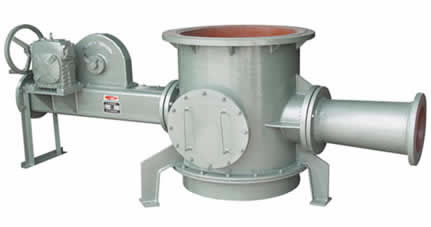
Environmental protection first UAE dry kiln dust short and medium distance conveying industry choice low pressure pneumatic conveying pump
The United Arab Emirates' (UAE) economic takeoff has led to a significant surge in demand for high-end industrial products worldwide. The rapid growth of the UAE's economy, driven by sectors like oil and gas, construction, and financial services, has created a robust market for sophisticated industrial goods. This increase in demand is not only domestic but also international, as the UAE plays a pivotal role in regional trade and supply chains. Consequently, multinational corporations are vying for a share in this expanding marketplace, showcasing the UAE's strategic importance and its contribution to global industrial dynamics.

In the production of silica fume in the United Arab Emirates (UAE), dust management is crucial to ensure a safe and efficient work environment, as well as compliance with environmental regulations. Effective dust control strategies involve multiple aspects including engineering controls, process optimization, personal protective equipment (PPE), and training programs.
Engineering controls are at the core of dust management; they include using dust collectors that employ cyclones, fabric filters, or electrostatic precipitators to capture particulate matter before it can disperse into the air. These systems are designed to remove airborne contaminants through various mechanical and electrical means.
Process optimization involves streamlining production procedures to minimize the generation of dust in the first place. This could entail using sealed conveyor systems, enclosing operations within buildings, and applying wet methods such as misting systems during material handling to suppress dust.
Personal Protective Equipment (PPE) is another key component of an effective dust management strategy. Workers should be equipped with respiratory masks, safety goggles, and gloves to protect against inhaling harmful particulates.
Training programs are essential to educate workers on the risks associated with silica dust exposure and the importance of following safety protocols. These programs cover topics like the correct use of PPE, the significance of regular maintenance of dust collection systems, and the proper disposal of collected dust.
By implementing these comprehensive dust control measures, UAE manufacturers can significantly reduce the risk of worker exposure to hazardous substances while adhering to stringent environmental standards. This not only enhances occupational health but also contributes to the sustainable practices of the industry.

Improving the fluidity of kiln dust is crucial for efficient and reliable pneumatic conveying, especially when using a low-pressure pneumatic conveying pump. Here are some measures to enhance the flowability of kiln dust:
1. Drying: Moisture content in the kiln dust can significantly affect its flowability. Drying the material to a lower moisture content improves its bulk density and flow properties.
2. Crushing and Grinding: Reducing the particle size of the kiln dust by crushing or grinding enhances its flowability. Smaller particles have a larger surface area and are less prone to agglomeration, which can lead to clogging during conveying.
3. Additives: Adding flow aids like silica flour or bentonite can improve the internal friction and reduce the risk of bridging and rat-holing in the material stream.
4. Proper Storage and Handling: Ensuring that kiln dust is stored and handled properly can prevent the formation of lumps and clumps that might interfere with the flow during conveyance.
In collaboration with a low-pressure pneumatic conveying pump, these measures contribute to an effective and trouble-free transportation process. The pump works on the principle of using air or gas under pressure to move the material through a pipeline. By ensuring good flowability of the kiln dust, the conveying system operates at lower pressures, reducing energy consumption and extending equipment life.
It's important to note that each batch of kiln dust may have slight variations in composition, so it's essential to monitor and adjust the flowability improvement measures accordingly to maintain optimal performance of the low-pressure pneumatic conveying system.
As the country's requirements for environmental protection and energy efficiency become increasingly stringent, future enterprises related to dry kiln ash will place greater emphasis on process innovation and environmental conservation. The emergence of new equipment such as low-pressure pneumatic conveying pumps undoubtedly brings new development opportunities to dry kiln ash-related enterprises in the UAE. Let's work hand in hand for mutual success! Walk together towards building dreams for the future. We wish ZHONGYUAN customers of UAE low-pressure pneumatic conveying pumps well. Thank you for trusting us with your dry kiln ash low-pressure pneumatic conveying pump needs; we will continue to provide you with high-quality products and services as always
